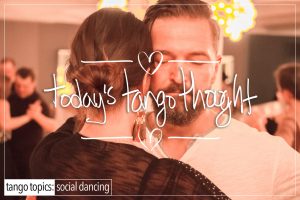There are many things to look for in a ‘Good’ Lead. Like for instance, the ability to keep time within the beat structure meaning that they’re placing their Follower’s on beat and not necessarily themselves. Still another is their posture which is reflected in the Follower’s posture as well. Still one more is the ‘cleanliness’ by which they execute a particular piece of vocabulary. That said ‘execution’ is done sharply, with snap and polish, and shows off their Follower, and in doing so, themselves. 😉 Those are some good signs of what qualifies as a ‘good’ lead (the action, not the person).
One more thing that is almost never talked about as a quality befitting or identified as leading, is the ability to match the skill level of Follower to what that Follower can do socially within the line of dance, within the embrace, and what is safe for them without (and here’s the hard part) it seeming as though it’s a chore, forced, controlled, contrived, or manipulated.
From a Leading perspective, here’s something to keep in the back of your mind: If the Follower is unstable, wobbling, and/or has difficulty with ochos, turns, and crosses, then dancing with them is really not about pressing them to do more than they can do. Dancing with them is more about keeping things insanely simple. Calming the Follower down, getting the Follower to feel comfortable with what they’re doing, that everything being asked of them is easy and easeful, there’s no pressure to do X or something crazy. The last thing said Follower wants is feeling out of control with a dizzying array of vocabulary where they’re literally stumbling over themselves. Doing such, by the way, is the sign of a less-than-desirable lead.
The sign of a ‘Good’ Lead is accommodating the level of the Follower. Always.











